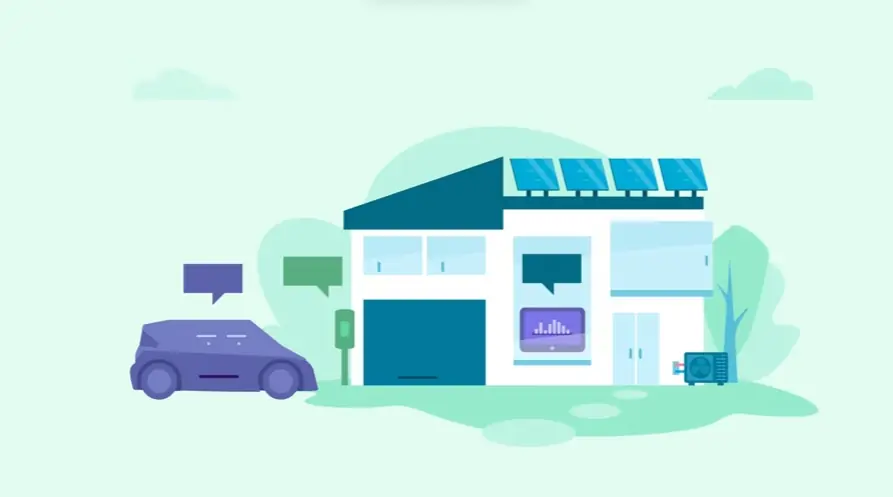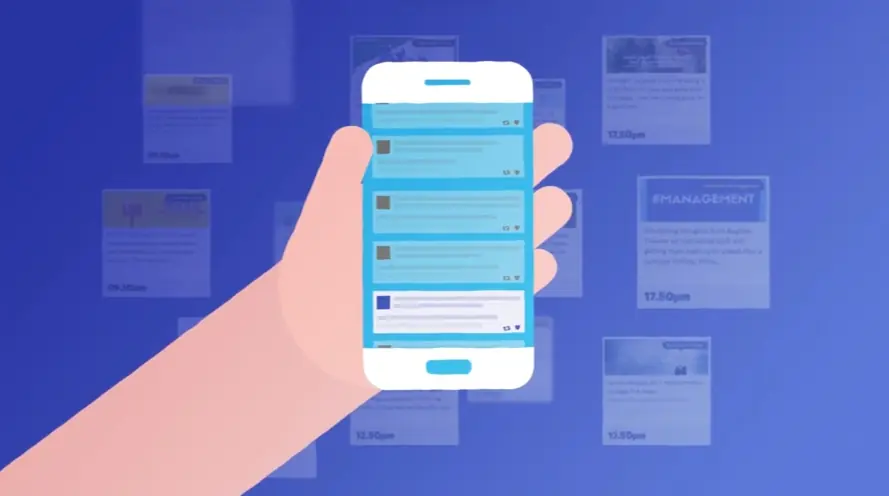
How can a product demo video best showcase key features for maximum impact?
Showcase product strengths by focusing on user benefits and problem-solving. Employ clear visuals and concise explanations for maximum impact.
What specific styles of product demo tour videos drive the highest engagement?
Engaging demo videos often employ dynamic camera movements, subtle animations, and clear messaging tailored to the target audience.
How can storytelling elevate a software walkthrough beyond a mere feature list?
Craft a narrative around the software's purpose and user empowerment. Showcase real-world applications and user benefits to create an emotional connection.
What core elements make a product demo video script truly compelling?
Compelling scripts focus on user needs and product solutions, using clear language and a strong call to action.
How should a product demo video be strategically placed within the marketing funnel?
Place demo videos at the consideration stage of the marketing funnel, after initial interest, to provide in-depth product information.
What UI/UX best practices should be emphasized in a product demo tour video?
Emphasize intuitive navigation, clear visual hierarchy, and seamless user flows to showcase ease of use and product enjoyment.
How can a well-crafted application walkthrough demonstrably generate qualified leads?
Well-crafted walkthroughs generate leads by showcasing value and prompting viewers to take the next step, like a free trial or contacting sales.
What is the ideal length for a product demo tour video to maintain viewer interest?
Ideal length depends on complexity and audience. Aim for conciseness while maintaining engagement. Shorter videos (under 2 minutes) often have broader appeal.
How can screen recordings be optimized for seamless customer onboarding experiences?
Optimize screen recordings with clear audio, concise explanations, and visual cues highlighting key features for smooth onboarding.
What compelling call to action (CTA) should a product demo video conclude with?
Conclude with a clear, specific call to action, such as visiting a website, requesting a demo, or starting a free trial.
How can we ensure a product demo video is captivating and avoids being monotonous?
Maintain viewer interest by varying pacing, incorporating visuals, dynamic transitions, and highlighting user benefits and success stories.
What pitfalls should be avoided when planning a professional product demo video?
Avoid jargon, overly technical details, and poor audio/video quality. Focus on clear messaging and visually appealing presentations.
How can existing marketing assets be repurposed for a product demo tour video?
Repurpose existing marketing materials like website copy, brochures, and presentations for a cohesive message.
Who is the ideal target audience for our product, and how does that inform the demo video?
Understanding your target audience's needs, pain points, and preferences informs the demo video's style, tone, and messaging.
When and why should animation be strategically employed in a product demo video?
Use animation to simplify complex concepts, highlight features, add visual interest, and showcase functionality and user interactions engagingly. Pricing for a 60-second animation ranges from $1000-$6000 depending on complexity. Turnaround time is typically 3-8 weeks.
Quantifying Product Demo Success: Metrics & ROI
Beyond simply showcasing features, truly impactful Product Demo Tour Videos provide powerful data points for measuring success. Moving past vanity metrics like views, teams increasingly focus on quantifying the tangible impact and return on investment these visual guides generate throughout the buyer journey. Understanding which elements resonate and drive action is key to optimizing their effectiveness and demonstrating their value.
Measuring performance involves tracking several key metrics. These reveal how well the video holds attention and prompts next steps in the sales funnel. Analyzing where viewers drop off or what they interact with provides crucial insights into content effectiveness, audience interest levels, and helps qualify prospects based on their engagement.
Tracking demo completion rates, call-to-action click-through rates, and ultimately, demo-to-opportunity conversion rates.
Utilizing data from interactive demo elements and overall viewer engagement data to inform sales conversations and product insights.
Employing A/B testing on different video versions or elements to make data-backed decisions for improved performance.
Demonstrating potential ROI directly within the video narrative using data visualizations and specific, quantifiable results.
By focusing on these measurable outcomes, teams can prove the value of their video content and continuously refine their strategy for greater sales and marketing impact.
Why Advids for Product Demo Tour Video?
At Advids, we create high-quality, original Product Demo Tour Videos designed to showcase your product's features and benefits in a compelling and engaging way. Our blend of creative storytelling, cutting-edge technology, and proven experience ensures your product demo stands out and drives results.
Unlocking the Power of Product Demo Tour Videos:
Customized Product Demo Tour Video Solutions: We tailor each video to your specific product, target audience, and marketing goals, whether you need a concise overview or an in-depth exploration of functionalities.
Creative Storytelling Through Animation: Our team crafts narratives that highlight key features and benefits, making your product demo memorable and persuasive.
Cutting-Edge Product Demo Tour Video Technology: We utilize the latest animation software and techniques to create visually stunning videos that captivate your audience.
Partnering with Advids:
Collaborative Process: We work closely with you throughout the entire production process, from initial concept to final delivery, ensuring your vision is realized.
Strategic Communication: We prioritize clear and open communication to understand your product, target audience, and desired outcomes, resulting in a highly effective product demo video.
Advids: Your Trusted Product Demo Tour Video Partner:
12+ Years of Proven Success: With over 3400 successful projects across various industries, we have the experience and expertise to create impactful product demos.
Trusted by Industry Leaders: Brands like Razorpay, Ola, Mercedes, the United Nations, Continental, and Mercer trust Advids to bring their stories to life. We've completed between 185 and 470 successful Product Demo Tour Videos.
Client Satisfaction Guaranteed: Our commitment to excellence is reflected in over 109 five-star Google reviews, showcasing our dedication to client satisfaction.
Ready to unlock the potential of Product Demo Tour Video for your business with the latest video design trends of 2024? Let Advids be your trusted partner in transforming your ideas into engaging and effective animated experiences.
Checkout some of the projects and work our team at Advids has been producing:
What is a Product Demo Tour Video?
A product demo tour video is a visual guide that showcases the features, benefits, and functionality of a product or service. It provides a comprehensive overview of the product's capabilities, walking viewers through its interface, use cases, and value proposition. These videos are often used in marketing and sales efforts to generate leads, educate prospects, and drive conversions.
Product demo tour videos are used across various industries, from software and technology to e-commerce and healthcare. They can be used to introduce new products, highlight key features, address customer pain points, and build brand awareness.
What do top Product Demo Tour Videos have in common?
Mastering product demo videos requires focusing on the viewer's journey and showcasing tangible value.
Ideal Customer Profile - Tailor messaging to resonate with specific user needs and pain points.
What makes Product Demo Tour Video effective?
A comprehensive product demo tour video is driven by a deep understanding of specific target audiences and their needs. For example, marketing professionals need automation tools, while sales teams require lead generation solutions. The video uses a compelling narrative arc , starting with a clear problem statement, introducing the solution, and demonstrating its benefits through a combination of screen recordings, animated explainer sequences illustrating complex features, data visualizations showcasing product performance, and real-world examples , including customer testimonials and case studies .
To maintain viewer engagement , aim for under 60 seconds for social media , up to 90 seconds for longer-form content. Incorporate interactive elements such as links to relevant resources, case studies, or pricing pages. End with multiple calls to action, like scheduling a demo, requesting a quote, or downloading a whitepaper.
Focus on 2-3 core USPs that directly address the target audiences pain points . Support these USPs with specific metrics and quantifiable results to demonstrate ROI or value. Tailor the video for different platforms; for instance, use vertical video for mobile and optimize titles/descriptions for SEO on YouTube and LinkedIn. A structured demonstration , rather than a simple visual journey, ensures viewers easily follow the products features and benefits.
How long should your Product Demo Tour Video be?
Optimize product demo video length for maximum impact by aligning video type, content, and target audience stage.
Pre-production Considerations for Determining Video Length:
- What's the video's core message?
- Who is the intended viewer?
- How many features are crucial?
- What's the product's complexity ?
- Where will the video reside?
- What's the video's purpose ?
- Which style best suits the message?
Product demo tour video length guide
| Product Demo Tour Types | Video Length | Use Case | Funnel |
|---|
| Screen Recording | 45-60 seconds | Quickly showcases core features, ideal for software or app demos, concise and efficient, clear UI navigation | Awareness/Consideration |
| Animated Explainer | 60-90 seconds | Explains complex product features simply, engaging visuals, ideal for technical products, clear and concise storytelling | Awareness/Consideration |
| Live Action Demo | 1-2 minutes | Demonstrates product in real-world scenarios, builds trust, human connection, realistic product usage | Consideration/Conversion |
| Product Showcase | 30-45 seconds | Highlights key features and benefits, visually appealing, fast-paced, impactful visuals | Awareness/Consideration |
| Tutorial | 1-3 minutes | Guides users through product setup and usage, step-by-step instructions, detailed explanation, clear visual cues | Consideration/Conversion |
How to create Product Demo Tour Videos?
Mastering product demo videos requires a strategic approach that prioritizes audience understanding and clear communication of value. Crafting a compelling narrative that showcases your product's unique benefits is key to driving conversions .
* Define Target Audience - Understanding your audience ensures the demo resonates with their specific needs and language.- Craft Compelling Narrative - A strong narrative keeps viewers engaged and helps them understand the product's value.
- Storyboard & Script - A well-defined storyboard and script ensures a cohesive and professional-looking final product.
- Video Style Selection - The right style enhances brand consistency and improves viewer engagement.
- Visuals & Music Choice - High-quality visuals and music create a professional and memorable viewing experience.
- High-Quality Footage - Professional footage builds trust and credibility, showcasing the product in the best light.
- Video Editing & Refinement - Precise editing creates a smooth, engaging viewing experience, highlighting key features.
- Visual Effects & Animation - Strategic use of effects clarifies complex features and enhances viewer understanding.
- clear call to action - A strong CTA drives conversions by guiding viewers towards desired actions.
- Platform Optimization - Optimization ensures your video reaches the widest possible audience across different devices.
Incorporating User Testimonials into Product Demos
Let's talk about the power of user testimonials in product demos. Testimonials aren't just nice-to-haves; they're powerful tools for building trust and driving conversions. Think of them as the social proof that backs up our claims, showing potential customers that we deliver on our promises. For instance, imagine a saas demo video example where a satisfied customer raves about how the software streamlined their workflow – that's impactful!
We've seen some creative product demo video examples that seamlessly integrate testimonials into the narrative. Instead of feeling like an afterthought, the testimonials become part of the story, reinforcing the value proposition. Even something as straightforward as a platform overview video can benefit from a well-placed testimonial, highlighting user satisfaction.
- Showcase Success: Select testimonials that highlight specific successes achieved with your product. A customer describing how your software helped them save time or increase revenue is far more compelling than a generic endorsement.
- Visual Storytelling: Pair testimonials with relevant visuals. If a customer praises your user-friendly interface, show a screen recording of the interface in action.
- Authenticity is Key: Choose testimonials that feel genuine and relatable. Avoid overly polished or scripted language. Real people, real stories – that's what resonates.
- Strategic Placement: Consider where a testimonial will have the most impact. Perhaps after showcasing a key feature or just before your call to action.
By strategically incorporating user testimonials, we transform our product demos from simple presentations into compelling stories that resonate with our audience and inspire action.
The Importance of a Strong Narrative in Product Demos
We've covered the technical essentials. Now, let's explore the magic ingredient: narrative. A compelling story transforms a product demo from a dry feature list into an engaging experience that resonates with viewers and drives conversions. Think of engaging product demo videos like mini-movies, captivating your audience and leaving a lasting impression.
Imagine watching a demo that simply lists features. Now, picture a demo that tells a story about how those features empower users to overcome challenges and achieve their goals. That's the power of narrative. It's about connecting with your audience on an emotional level, showing them not just what your product does, but why it matters.
- Showcase Transformation: Don't just tell viewers what your product does; show them how it transforms their lives. For instance, explainer video examples for software often use animation to simplify complex features, making them more accessible to viewers.
- Evoke Emotion: Connect with your audience by tapping into their aspirations and pain points. A Feature Highlight Video can be more impactful by focusing on the benefits of each feature, not just its functionality.
- Craft a Journey: Take your viewers on a journey, starting with a problem, introducing your product as the solution, and culminating in a positive outcome.
- Keep it Concise: Respect your viewers' time. A concise, impactful narrative is more effective than a lengthy, rambling presentation.
By weaving a compelling narrative, we transform our product demos into persuasive stories that resonate with our audience and inspire action.
Creating a Call to Action that Converts
Let's dive into creating call-to-actions that convert. Think of your CTA as the bridge between showcasing your product and gaining a customer. A compelling CTA doesn't just tell viewers what to do; it inspires them to take action. For instance, imagine a software demo video example where the CTA isn't just "Visit our website," but "Start your free trial today and see how we can streamline your workflow." That's the difference between a passive suggestion and a compelling invitation.
We've analyzed top product demo video examples and found that the most effective CTAs share some key characteristics:
- Clarity is King: Use concise, action-oriented language. "Get Started Now" is more impactful than a vague "Learn More."
- Highlight the Value: Focus on the benefits, not just the features. Instead of "Download our brochure," try "Get your free guide to boosting productivity."
- Strategic Placement: Consider where your CTA will have the most impact. In an interactive product video, embedding the CTA within the interactive elements can be highly effective. For a product explainer video, a simple "Visit our website" at the end might suffice.
A well-crafted CTA is the final piece of the puzzle, transforming viewers into engaged customers. Remember, the goal isn't just to inform, but to inspire action.
Balancing Information and Engagement in Product Videos
Creating compelling product demos requires a delicate balance between providing essential information and keeping viewers engaged. Think of it as crafting a mini-movie: you need a captivating storyline, stunning visuals, and a clear message to leave a lasting impression. We've already covered the technical aspects, so let's explore how to weave these elements together for maximum impact . Remember, the goal isn't just to inform, but to inspire action.
We've analyzed countless professional product demo video examples and discovered some key strategies for achieving this balance. It's about understanding your audience, crafting a compelling narrative, and showcasing your product's value in a way that resonates. Let's dive into some actionable tips to transform your product demos from informative presentations into engaging experiences.
- Show, Don't Just Tell: Instead of simply listing features, demonstrate their value in real-world scenarios. Imagine an app demo video example where you show how the app simplifies a complex task, making the user's life easier.
- Focus on Benefits: Highlight the positive transformation your product offers. Think of it as creating a Solution Demo Video that showcases how your product solves a specific problem for your target audience.
- Visual Storytelling: Use visuals, animation, and graphics to enhance engagement and create an emotional connection. Drawing inspiration from successful product explainer video examples can be invaluable.
- Humanize Your Brand: Inject personality and authenticity into your presentation. Let your passion for your product shine through, building rapport with your audience.
By implementing these strategies, we can create product demos that not only inform but also captivate, converting viewers into enthusiastic customers.
Author & Editor Bio
A video producer with a passion for creating compelling video narratives, Jai Ghosh brings a wealth of experience to his role. His background in Digital Journalism and over 11 years of freelance media consulting inform his approach to video production. For the past 7 years, he has been a vital part of the Advids team, honing his expertise in video content planning, creation, and strategy.
His collaborative approach ensures that he works closely with clients, from startups to enterprises, to understand their communication goals and deliver impactful video solutions. He thrives on transforming ideas into engaging videos, whether it's a product demo, an educational explainer, or a brand story.
An avid reader of modern marketing literature, he keeps his knowledge current. Among his favorite reads from 2024 are "Balls Out Marketing" by Peter Roesler, "Give to Grow" by Mo Bunnell and "For the Culture" by Marcus Collins. His results-driven approach ensures that video content resonates with audiences and helps businesses flourish.




